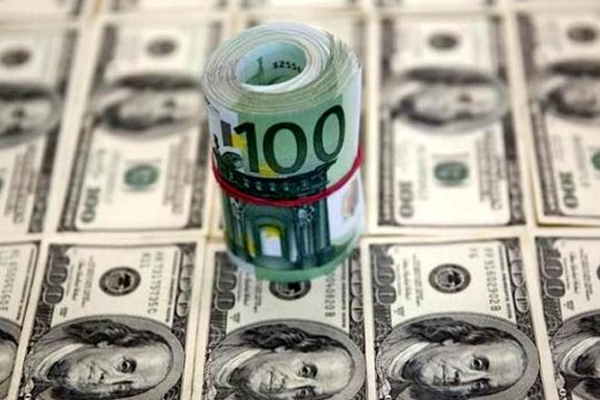Mumbai: Foreign institutional investors (FIIs) put money into Indian equities in substantial volume in 2019, and overseas investors watching Dalal Street say that trend is likely to continue in 2020 as well.
FIIs pumped in a net of more than Rs 1 lakh crore in Indian stocks during the year gone by, making it their best such infusion in six years. Prior to this, they had injected a net of Rs 1.13 lakh crore in 2013.
However, slowing economic growth and rich stock valuations may slow down that pace, making investors to hunt for pockets with better growth promise.
“There is a fair chance that emerging markets flows will be positive in Q1 of 2020, because flows for the whole of 2019 were quite modest and turned positive recently. India should get its share of total EM inflows,” said Hertta Alava, senior strategist at Nordea in Helsinki, Finland.
That was the popular view.
Neelkanth Mishra, co-head of equity strategy for Asia Pacific, and India equity strategist at Credit Suisse, believes global flows are likely to be supportive of Indian shares in 2020 as well.
“A significant part of foreign portfolio investment (FPI) holdings in India appears to be longer term in nature or benchmarked. Even easing global monetary conditions and reduction in global growth risks should be supportive of flows into EMs, and India should then get its share,” he said in a note on December 19.
Alava of Nordea says investors will be in a positive mood early in 2020, when Chinese President Xi Jinping and US President Donald Trump sign the Phase 1 of trade deal and global macro data starts improving.
“Also, EM growth (excluding China) should accelerate a bit after the recent interest rate cuts start impact investments and consumption,” she said.
Total market capitalisation of the Indian equity market stood around Rs 154 lakh crore, or $2.2 trillion, as of Monday’s close. Foreign portfolio investors (FPIs) held around Rs 30 lakh crore, or 20 per cent of that market-cap while domestic insurers held Rs 10 lakh crore and domestic mutual funds Rs 12 lakh crore, ICICIdirect said in a note on Monday.
Of the total FPI inflows into India, more than 90-95 per cent can be attributed to actively managed funds, while flows through passive ETFs (exchange-traded funds) are estimated to be less than 5-10 per cent.
However, ETF flows into EMs have seen consistent growth with the number of ETFs focused on EMs growing 25 per cent from 200 to 250 in last one year, highest ever.
Accordingly, the Indian market is likely to receive a higher share of passive flows from both India-dedicated or EM-dedicated ETFs, going forward, ICICIdirect analysts said, adding that sectors such as financials, energy, IT, consumer staples and consumer discretionary have higher weightages in most of these ETF benchmarks and are likely to receive bulk of these passive FPI flows.
The easy liquidity conditions following US Federal Reserve’s accommodative stance also bodes well for riskier assets, including emerging market equities.
“FPI flows should sustain at least in the first half of the year, given the easy liquidity conditions globally and the seeming progress on the trade deal,” said Suhas Harinarayanan, Head of Institutional Equity Research at JM Financial Institutional Securities.
Others tend to agree.
“FPI flows would depend on several factors like US interest rate trajectory, currency movement (USD-INR), global economic growth, domestic growth and valuation comfort (Indian markets). We expect the above factors to work in favour of inflows, but valuations of Indian markets remain expensive despite a slowing economy,” said Ajit Mishra, Vice-President of Research at Religare Broking.
India’s economic growth has also been slowing down, causing a concern for many. GDP growth hit an over six-year low of 4.5 per cent in the July-September quarter, dragged mainly by a deceleration in manufacturing output and subdued farm sector activity.
The pace of GDP growth moderated from the 5 per cent rate in April-June and 7 per cent in July-September quarter of 2018.
Alava of Nordea has a neutral view on India.
“India’s growth has slowed down quite a bit and despite interest rate cuts and other measures, there is not yet much evidence of recovery. Many stocks look quite expensive,” she said in an email interaction.
Others believe the pace of FII flows in 2020 would be contingent on a lot of factors and were too early to predict.
“It all depends on how EM flows and global risk appetite shape up, and within that, the allocation for India. FIIs have remained overweight for India, and it has enjoyed better positioning among EMs on continued hopes of growth recovery,” said Gautam Chhaochharia, Managing Director and Head of Research at UBS Securities India.
“A lot will depend on whether we see more reforms, and how the policy measures play out to boost growth,” he said.
Source: ET
Image Courtesy: The Financial Express
You may also like
-
Trade Connect E-platform For Exports Is Single Window, Fast, Accessible And Transformational: Shri Piyush Goyal
-
Dot Simplifies Approval Processes For Telecom Licenses And Wireless Equipment
-
Coal Production and Supply Trends on Positive Trajectory
-
Union Minister To Release Booklets On Promotion Of Indigenous Species & Conservation Of States Fishes
-
2nd India-Japan Finance Dialogue held in Tokyo on 6th September, 2024
